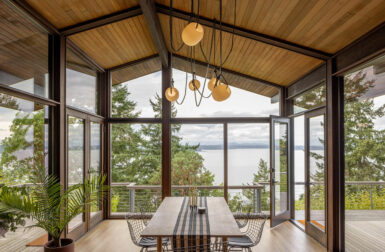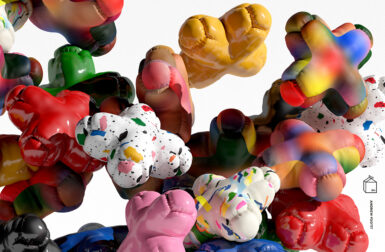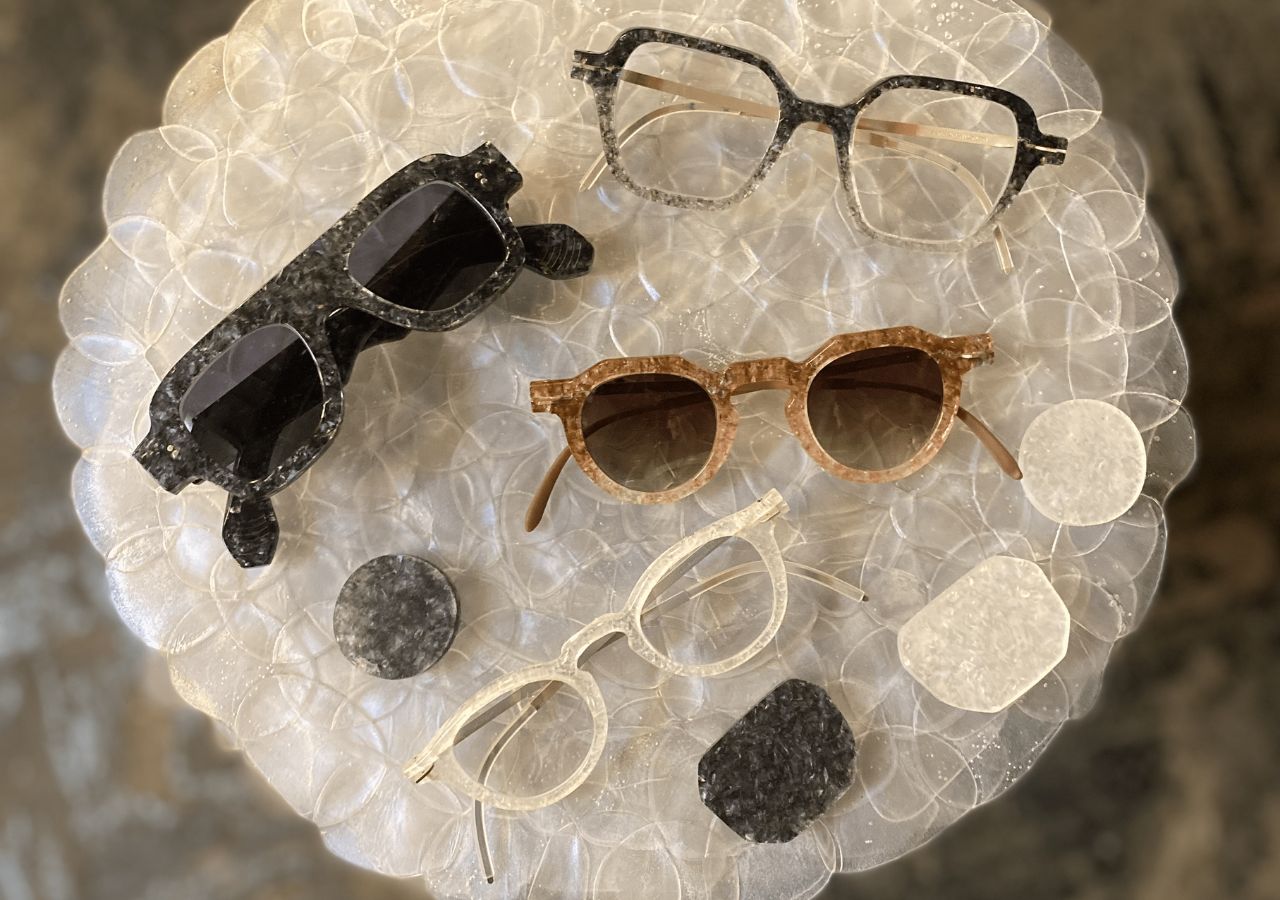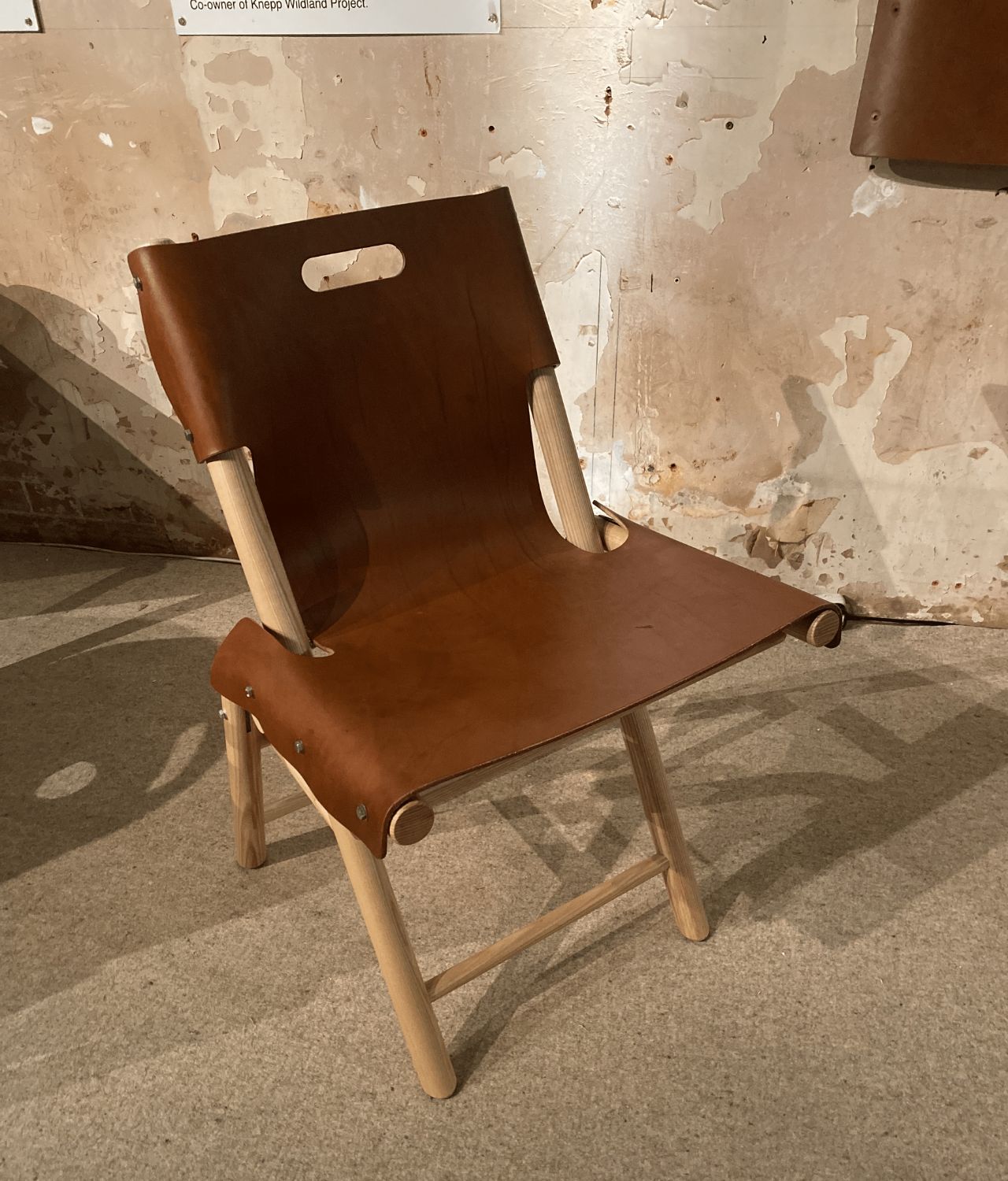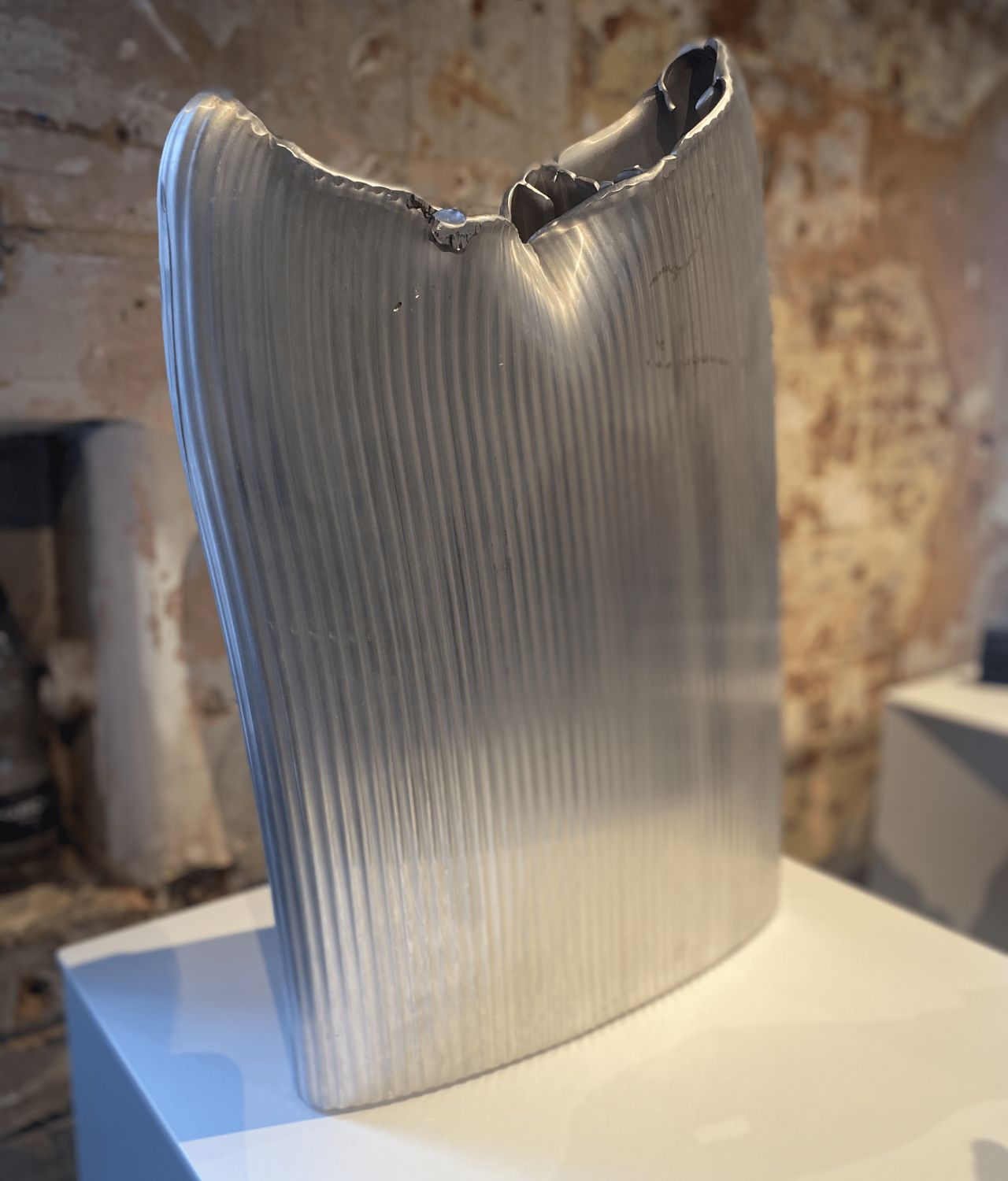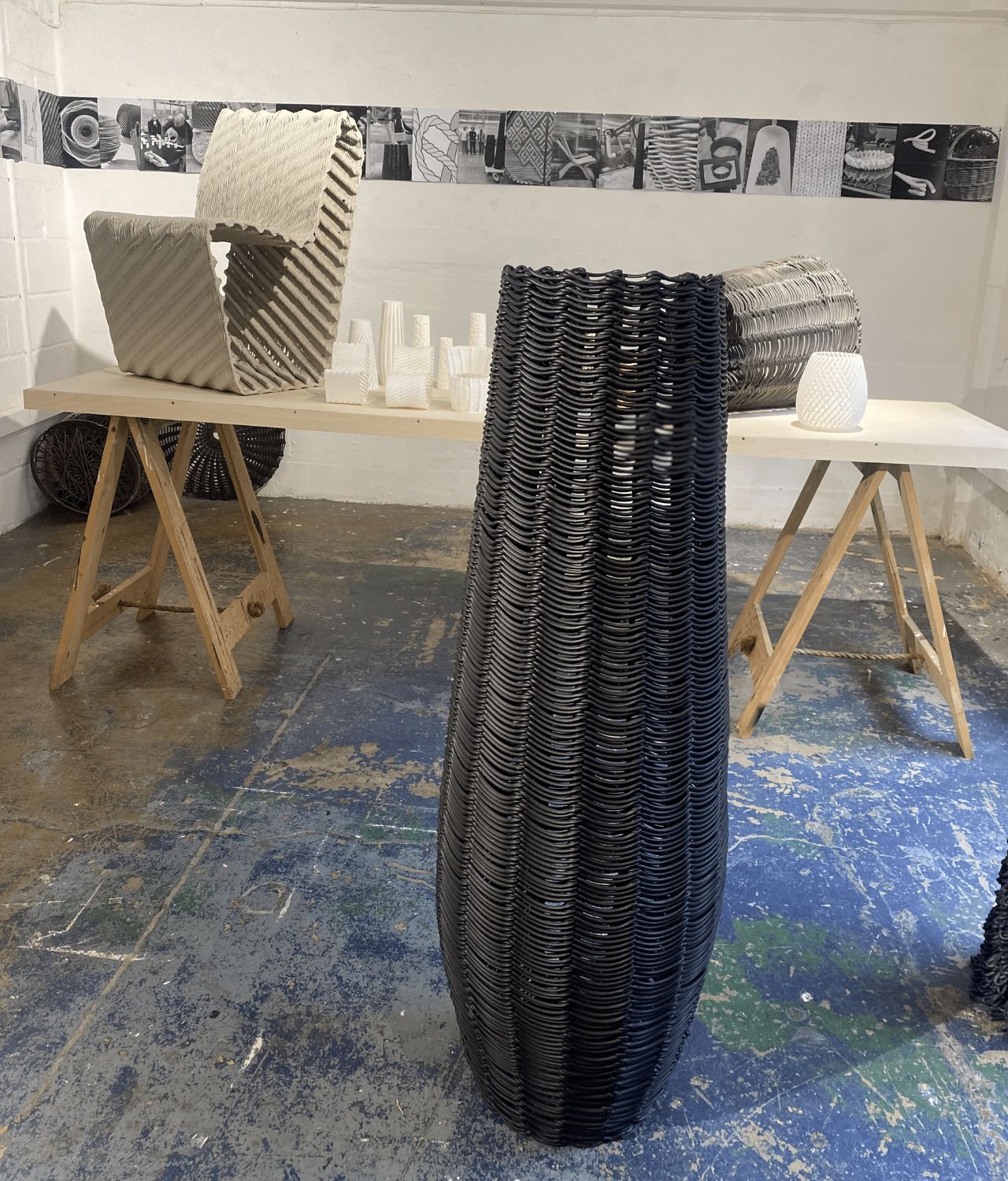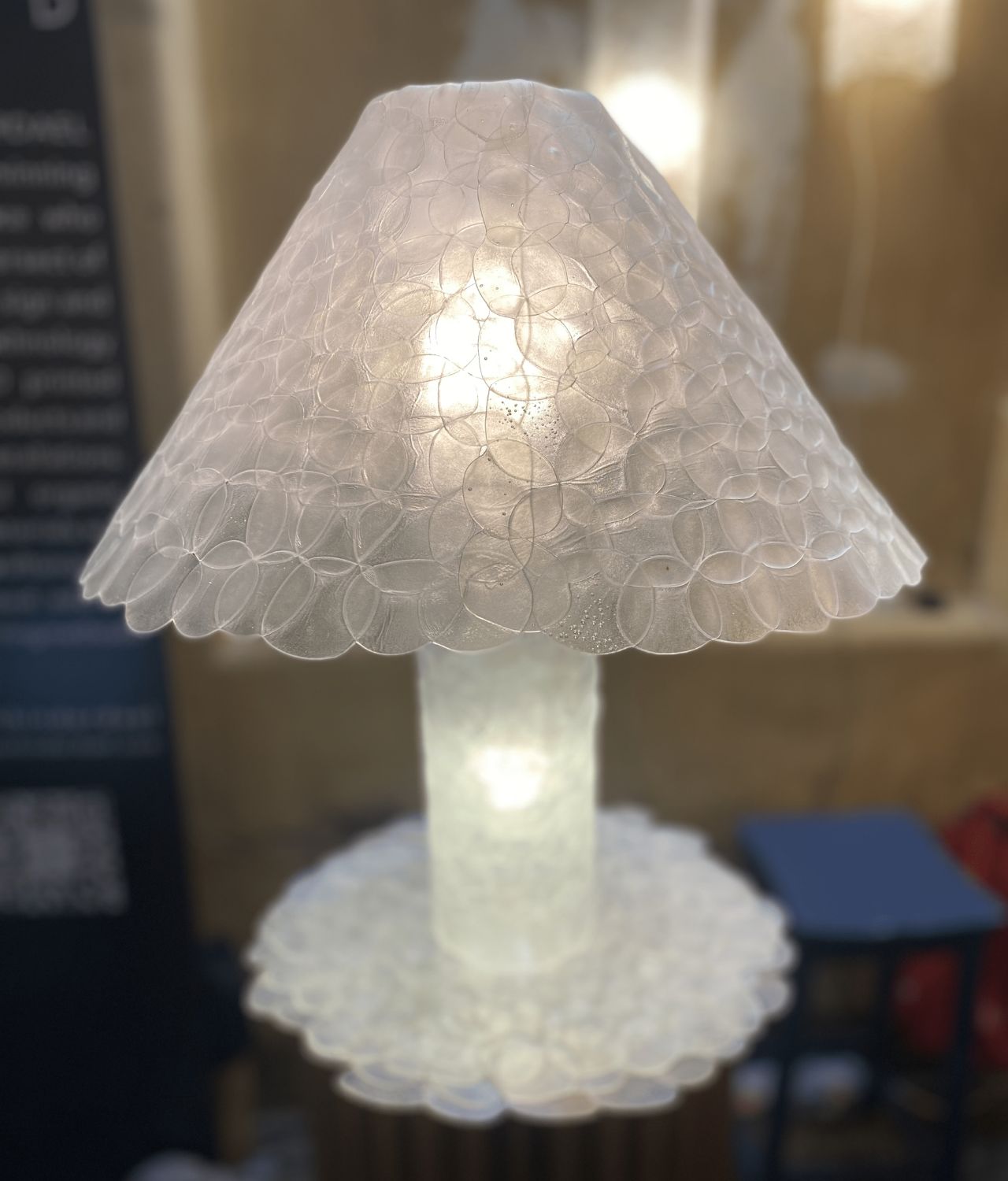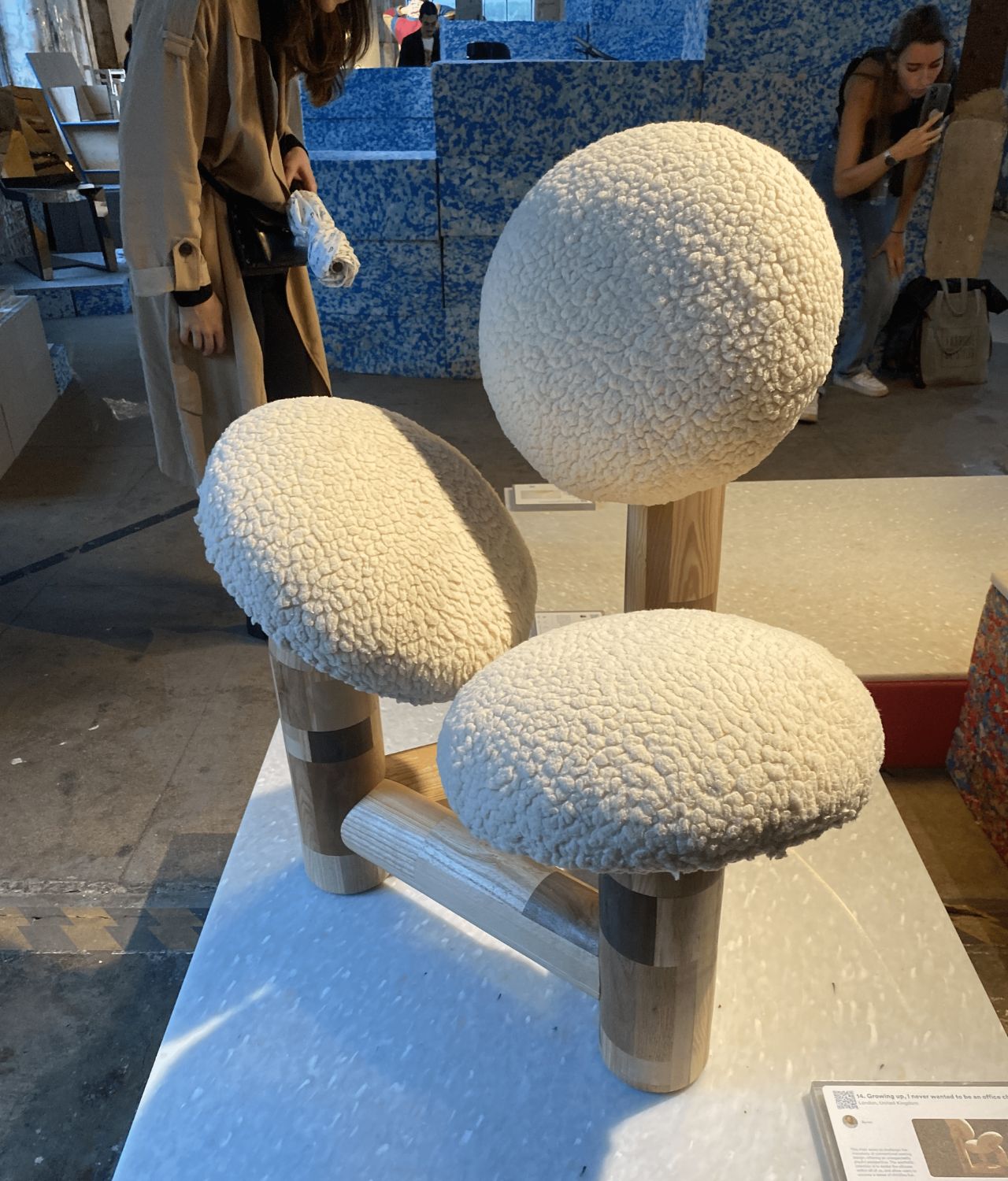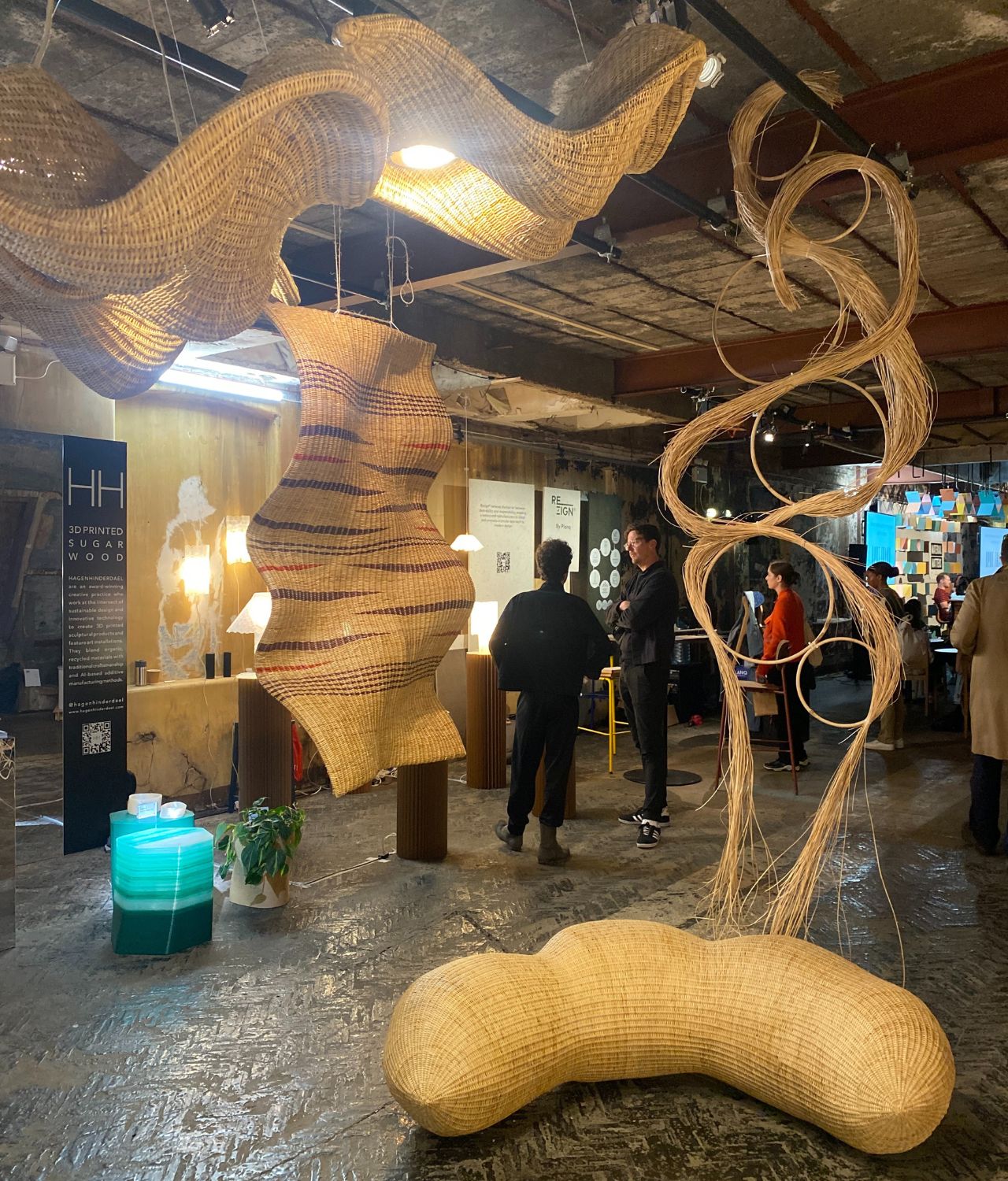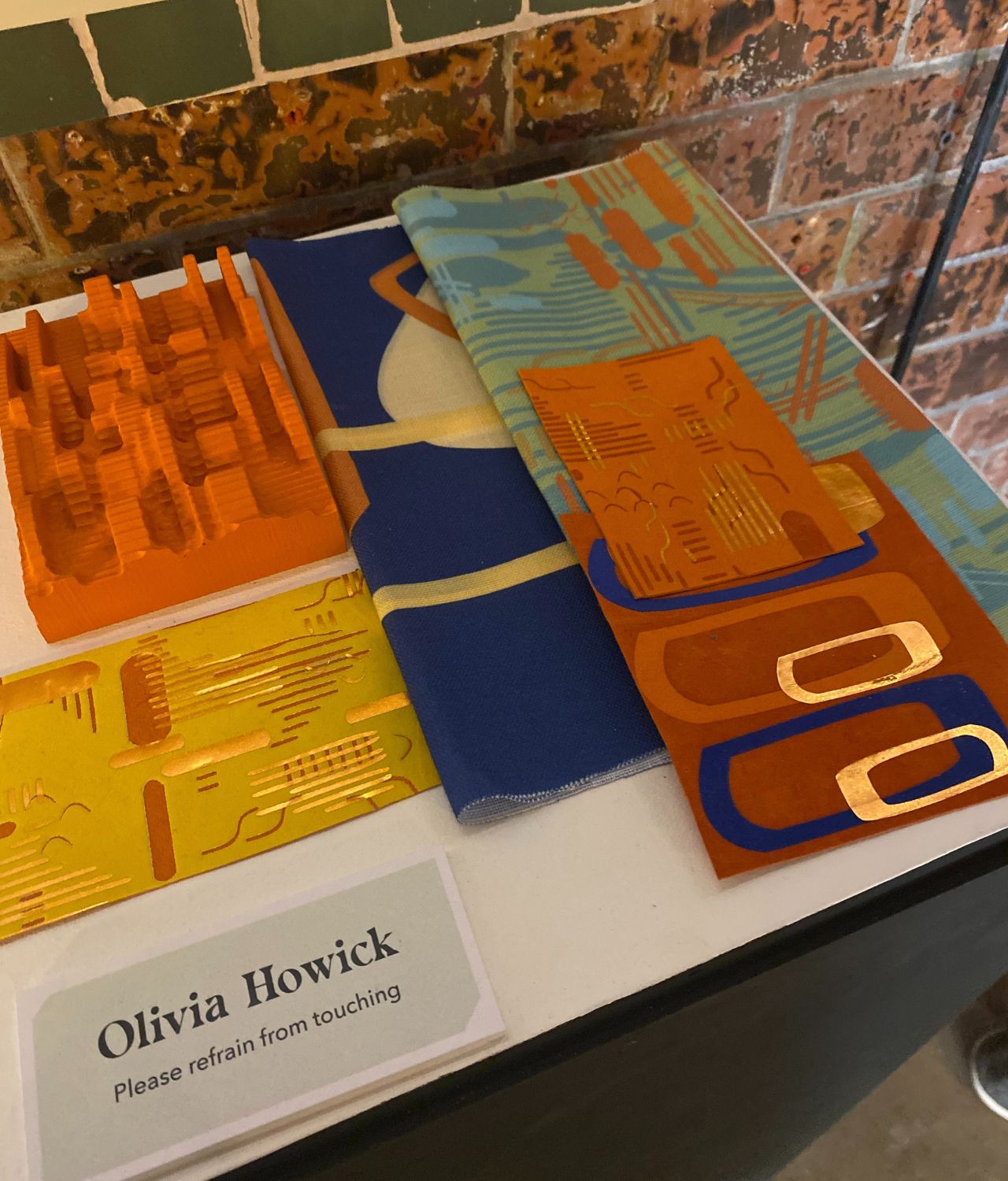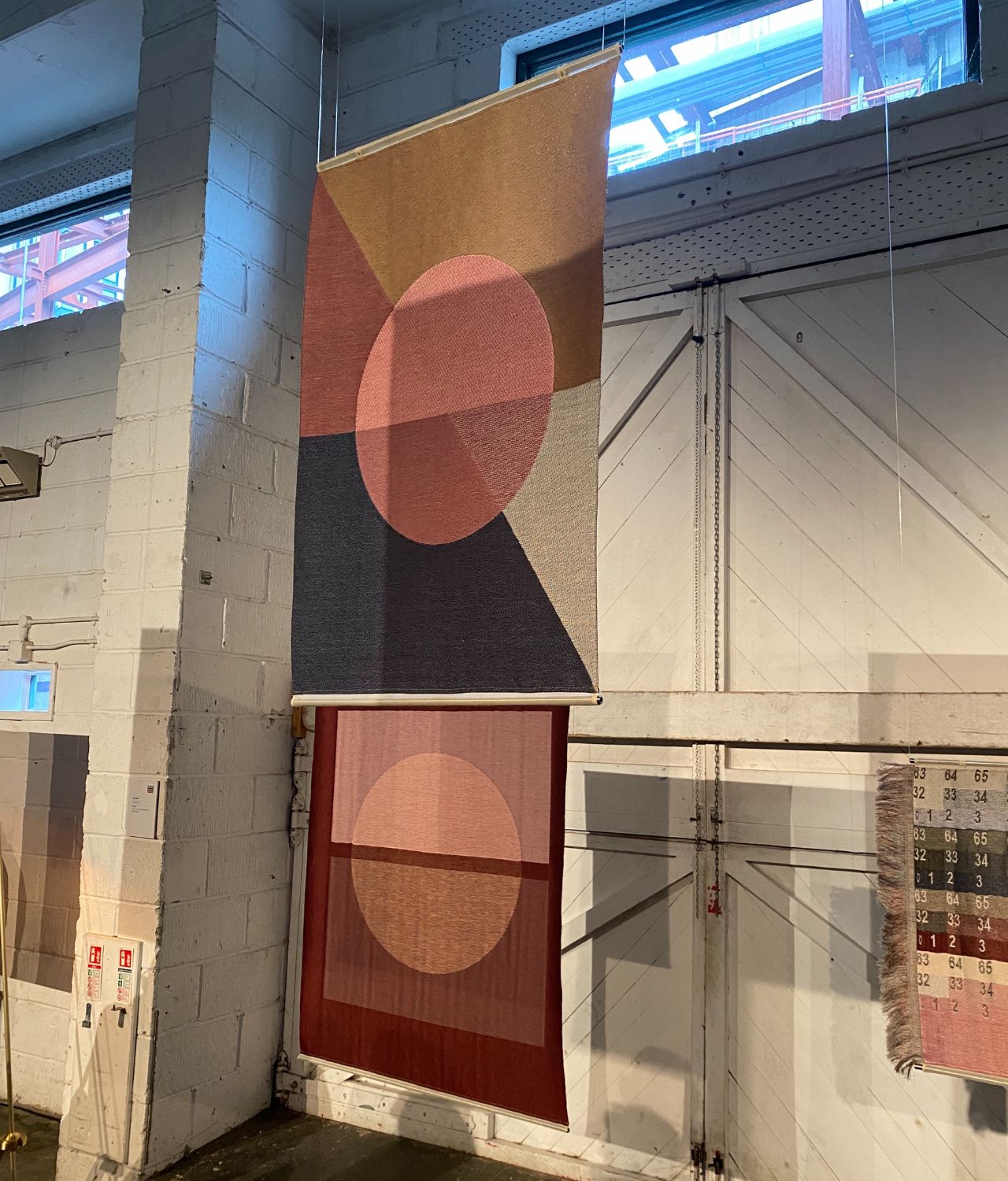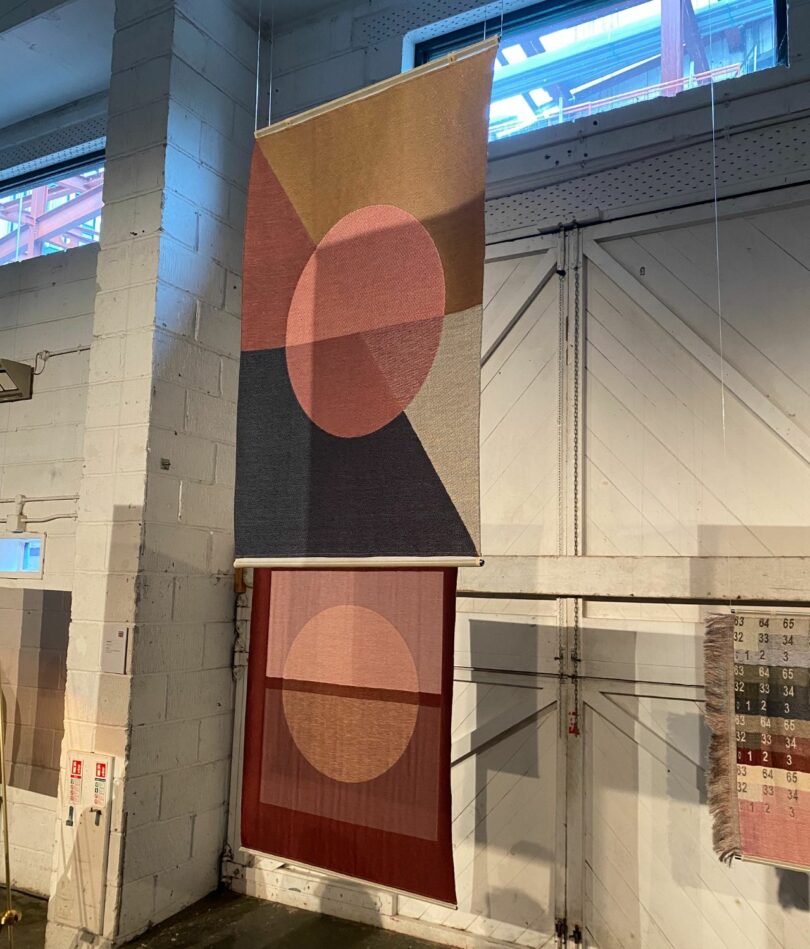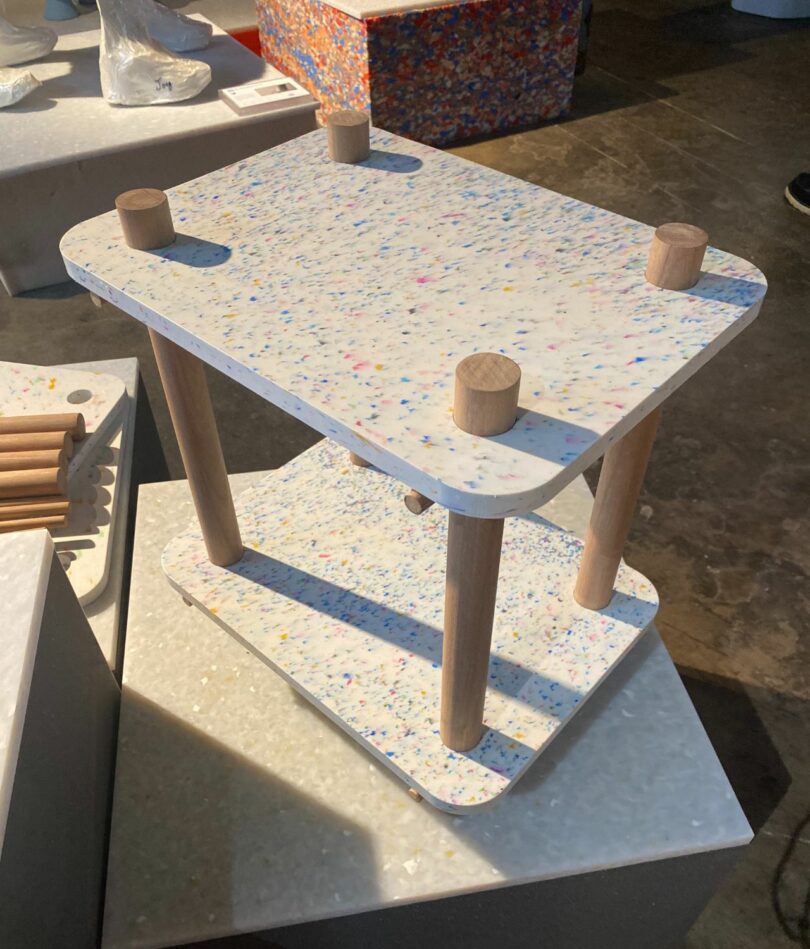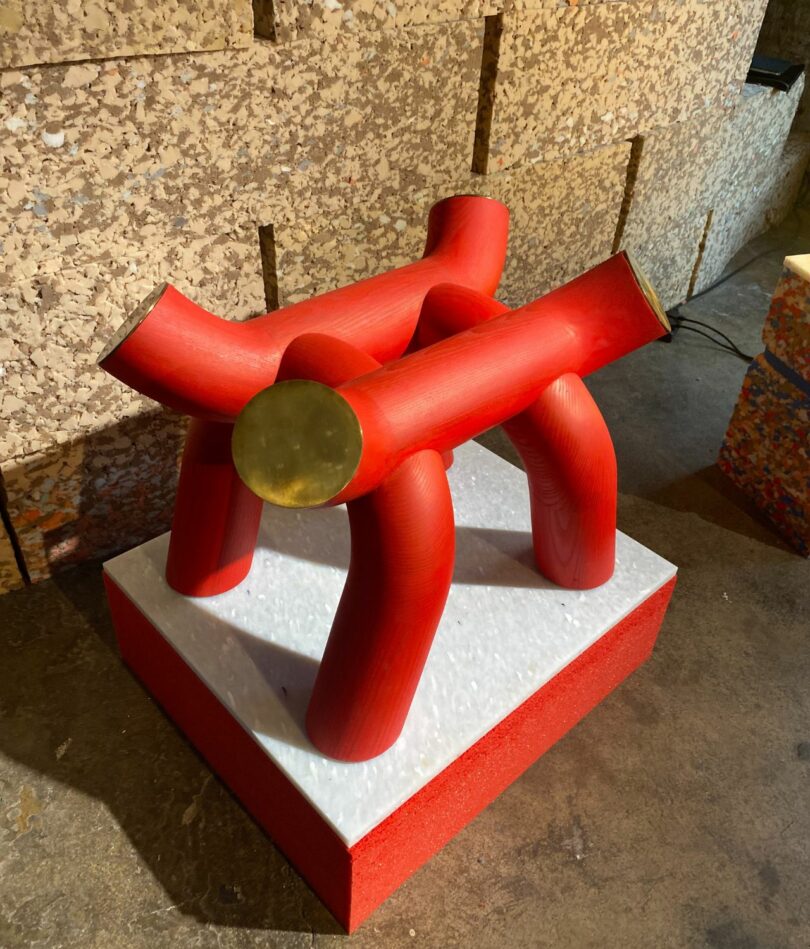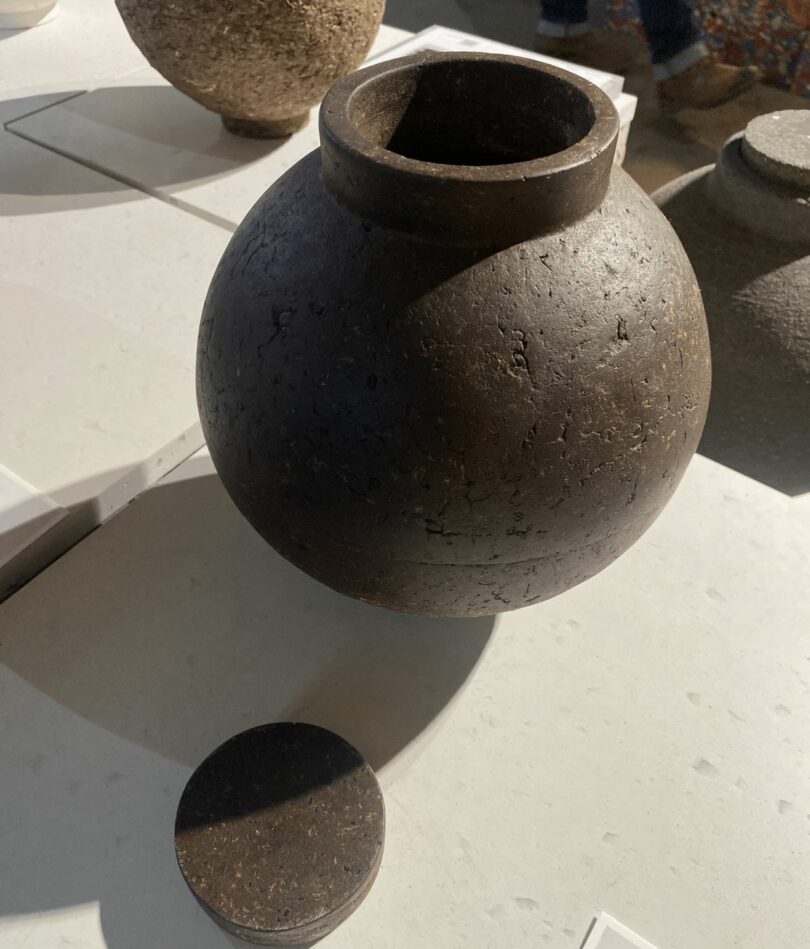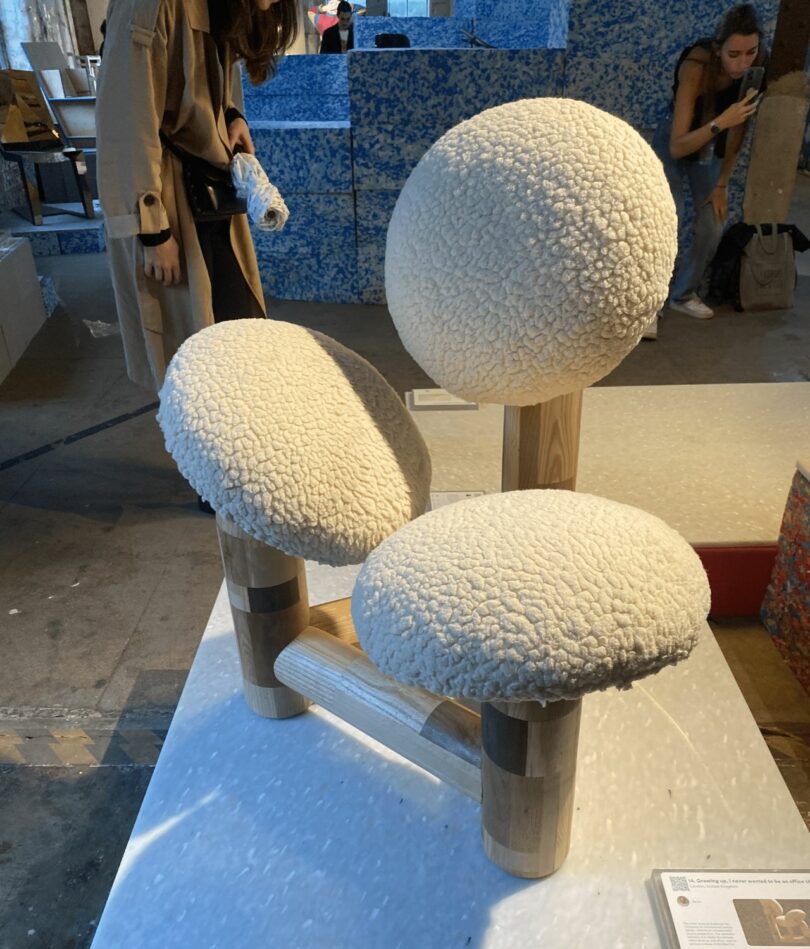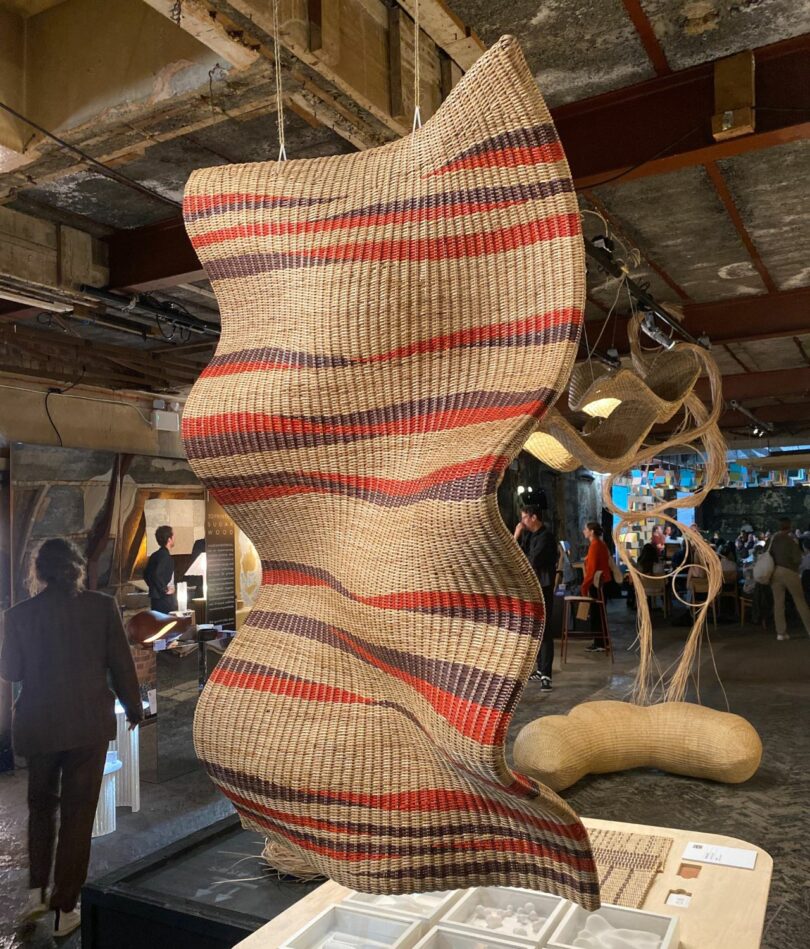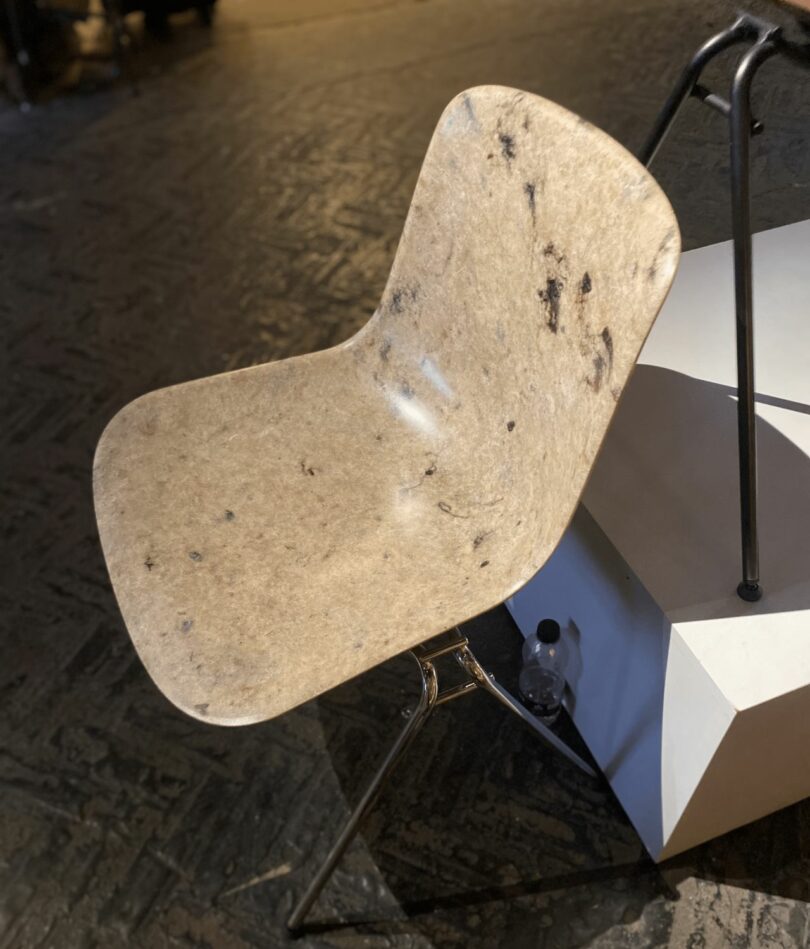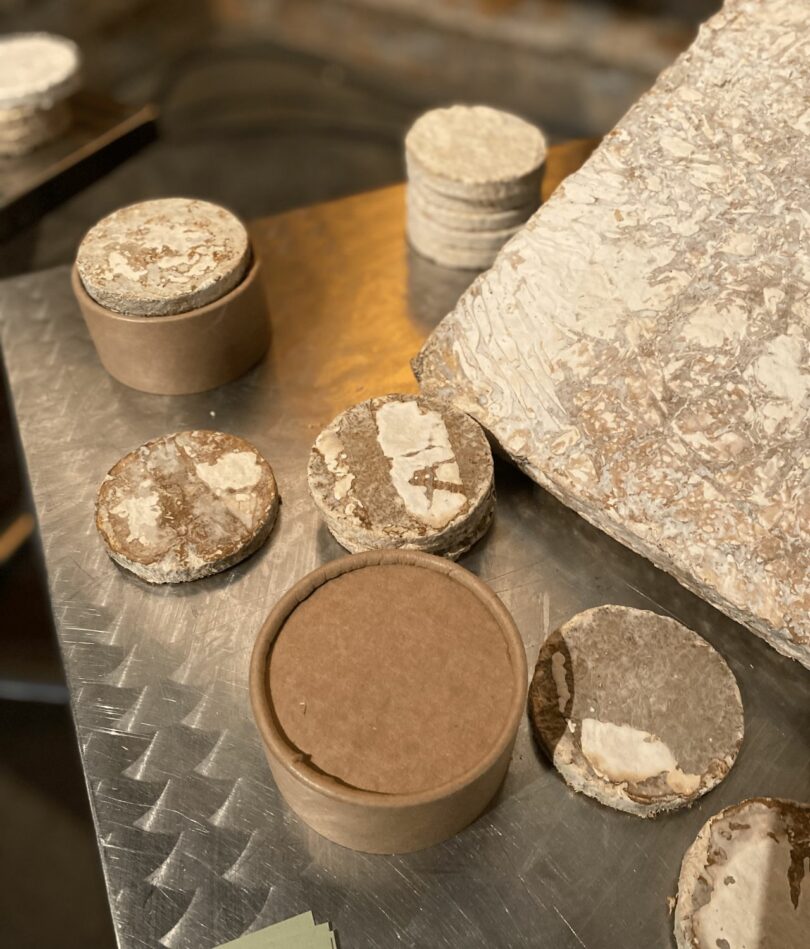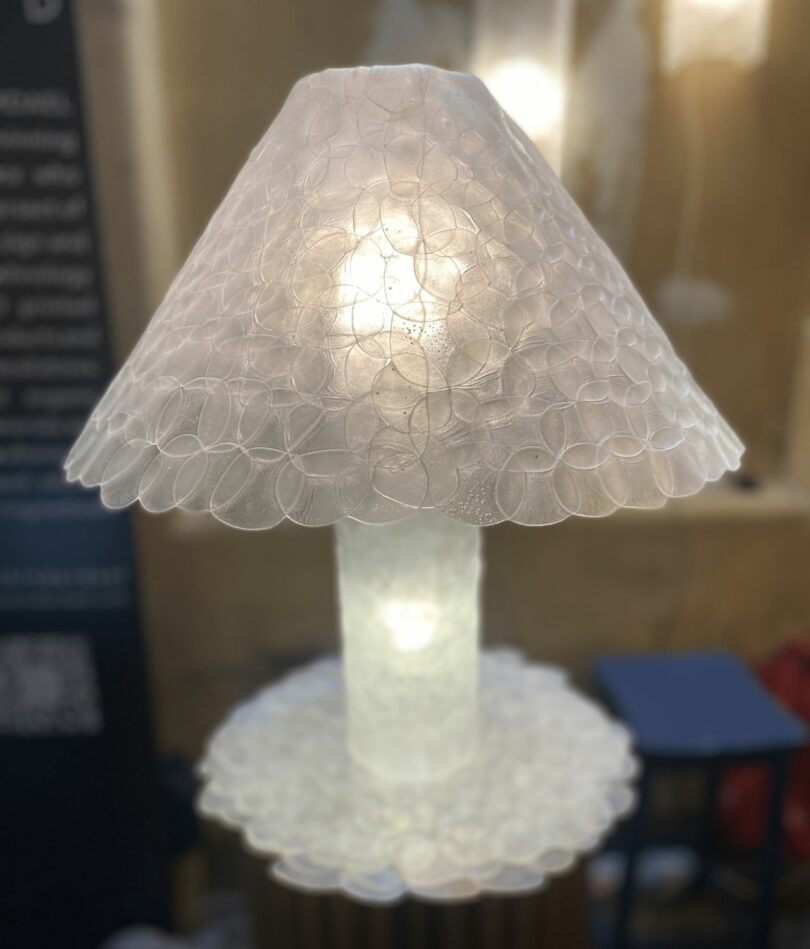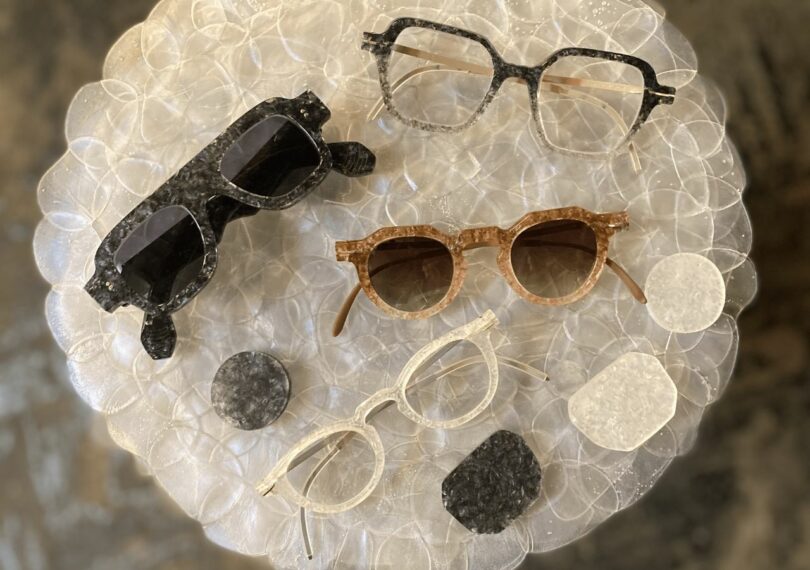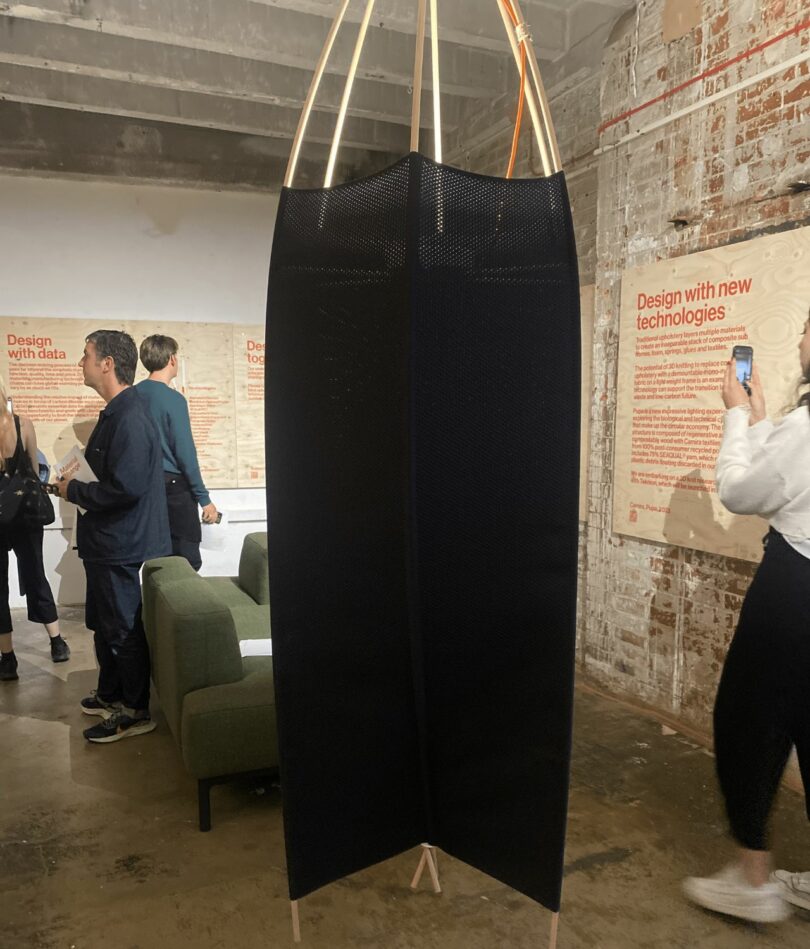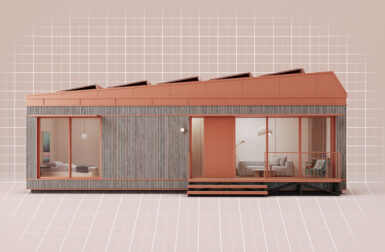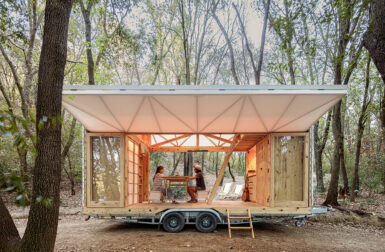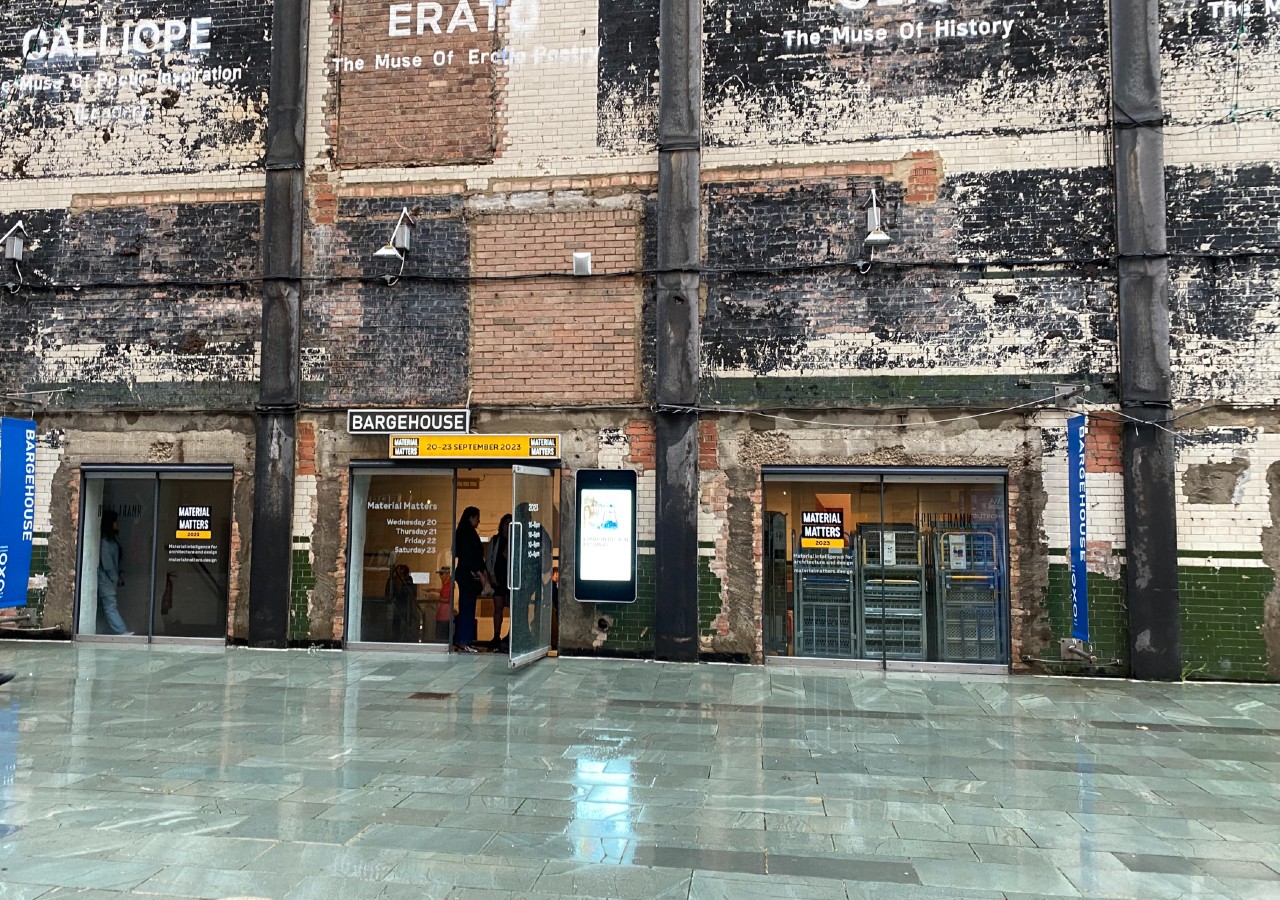
Material Matters is one the newest and most exciting additions to the London Design Festival. Only in its second year, it is held at The Barge House on London’s Southbank, making it a bit of a destination location, but well worth the trip. It has been co-founded by industry heavy-weights, including former editor of Crafts Magazine and Blueprint, Grant Gibson, and former deputy director of the London Design Festival itself and director of both 100% Design and Clerkenwell Design Week, William Knight, so you know you’re in safe hands.
The tempo is set from the moment you walk into the industrial atrium that waits behind the front doors. Likened by Grant to a magazine’s front cover, Planted, an installation by Danish designer Tanja Kirst comprises 10 textile pieces – made from hemp and yarn spun from oranges, seaweed, and pineapple – suspended from the double-height ceiling, inviting visitors “to experience new degradable and circular materials through experimental processes.”
Inside the exhibits range from the materially adventurous to more commercially applied examples, but this was a favorite – the This is Grown Shoe Upper by designer and creative researcher Jen Keane is fabricated using a process she calls “microbial weaving” in which k. rhaeticus bacteria are encouraged to “weave” a high-performance hybrid material that gives its plastic counterparts a run for their money.
Part of an exhibition within the exhibition by Isola called Nothing Happens If Nothing Happens, MOD+ by Lima-based furniture design studio Retablo is a modular shelving system made from 100% recycled plastic and turned wood, native to where it is made in Peru. The whole thing is shipped flat and can be reconfigured as required.
Within the same space, Symposium of Gods and Spirits: Part 1 is London-based Ultramar Studio’s debut collection, inspired by ancient Greek gatherings for intellectual discussion. Hand-crafted by Hong Kong born Ewan Lamm as a response to both global crises and his own personal experiences, “as a haven for where Gods and spirits collaborate for global betterment.” Positioned opposite the bar within Material Matters as it was, that might have been a lofty aspiration, but there were at least a few conversations aiming to put the world to rights. The Torii Stool (above) was inspired by the Japanese mythological structure and constructed with two arched legs joining with two beams to form the seat.
One of the most touching pieces showcased at Material Matters (also part of Nothing Happens If Nothing Happens) was a reimagining of the cremation urn entitled Americano & Newspaper by Simon Frend. Handmade from recycled materials, these “ephemeral eco cremation vessels” are designed to completely biodegrade into the earth when they are buried along with a loved one’s remains.
And finally within the Isola-curated section, and made entirely from London-based waste, the curiously titled Growing Up I Never Wanted To Be An Office Chair was designed by Byron to challenge the monotony of conventional seating design and offer a playful alternative that might awaken the childlike sense of fun in all of us.
Wicker story is an off-shoot of Prelab Design Studio, an architecture and design practice based in Hyderabad, India. It was founded in 2019 by Priyanka Narula in response to a personal quest to define the future of design in the Indian context.
“Our work involves the translation of digital processes for complex designing for easy adaptability to Indian craft and material systems,” she says. “Wicker story, apart from being an effective tool to realize customized and complex geometries, also transcends scale and geometry and defines new protocols for design. Our products are 100% sustainable and offer a zero waste production methodology.”
Solidwool has been around for a while. The idea behind the brand is to capture wool from Herdwick sheep – the iconic breed that was historically used in the UK carpet industry, but has fallen out of favor and is now considered an almost worthless byproduct of sheep farming – in eco-resin to create high-value furniture and accessories. The brand has recently been acquired by Roger Oates Design and a process of re-engineering the material, developing production, and re-designing the Hembury Chair (above) undertaken. It was good to see that the results felt true to the original intent.
Mycelium feels like the material of the moment, so it wouldn’t be a show about materials without at least a couple of examples and fumo panels were one – wallcovering panels comprising of fungal mycelium and agricultural waste like hemp and sawdust. “We allow biology to create highly sustainable material while transforming natural waste into solid biocomposites using fungi mycelium,” they say.
Material Magic was a showcase from the Minerva Art Academy led by Jack Brandsma into alternative natural binders such as magnesium and potato starch. “Natural fibers like hemp are often used as reinforcement in combination with a synthetic binder, which makes the composite material hard to recycle,” says Jack.
Perhaps the most surprising waste material on display was the use of the display lenses that eye doctors pop out of spectacle frames when they put your prescription lenses in. London-based designer and entrepreneur Yair Neuman has a long-running collaboration with British eyewear brand Cubbits, which started with a series of lights he designed for their stores.
He has now developed Delerex®, an innovative material made from discarded lenses, without the use of glues or bonding agents, which is used exclusively in his work. In the most beautifully circular move, he has now developed Fused, a collection of glasses frames that you can buy from Cubbits stores across London.
British designer Gareth Neal has collaborated with Dutch design studio The New Raw to pioneer a new 3D-printing method that uses three-times-recycled plastic and prints in intentionally imperfect loops rather than layers to mimic craft techniques and reduce errors. The result is a collection called Digitally Woven.
Interior leatherwork studio Bill Amberg exhibited the furniture that came out of its collaboration with the Knepp Estate, renowned for its ground-breaking “wilding” project, the driving principle of which was to establish a “functioning ecosystem where nature is given as much freedom as possible.” The collection uses leather from the estate’s English longhorn cattle. “We’re delighted to be collaborating with Bill Amberg Studio to honor our animals, in the way our ancestors would have done, by using their skins – with care, craft, and gratitude,” says Knepp’s Isabella Tree.
And finally, one of the absolute highlights of the show was a mini-exhibition called Material Change by London-based design studio Pearson Lloyd. Reflecting on the changes they have made to their own practice over recent years, they explored themes such as “design with data,” “design with waste materials,” and “design for circularity” with honesty, pragmatism, and clarity – qualities that are all-too-often missing from the environmental debate.
